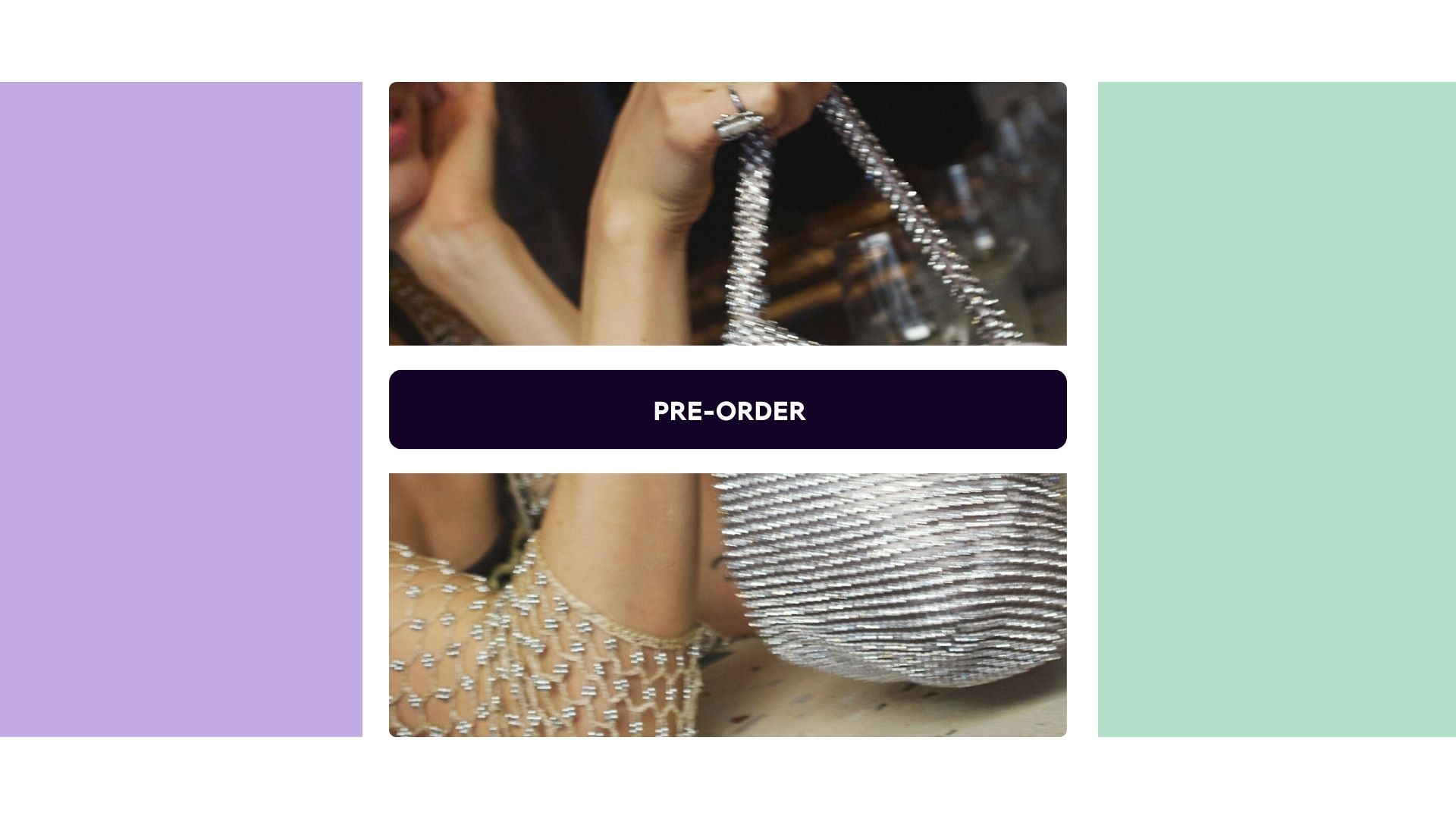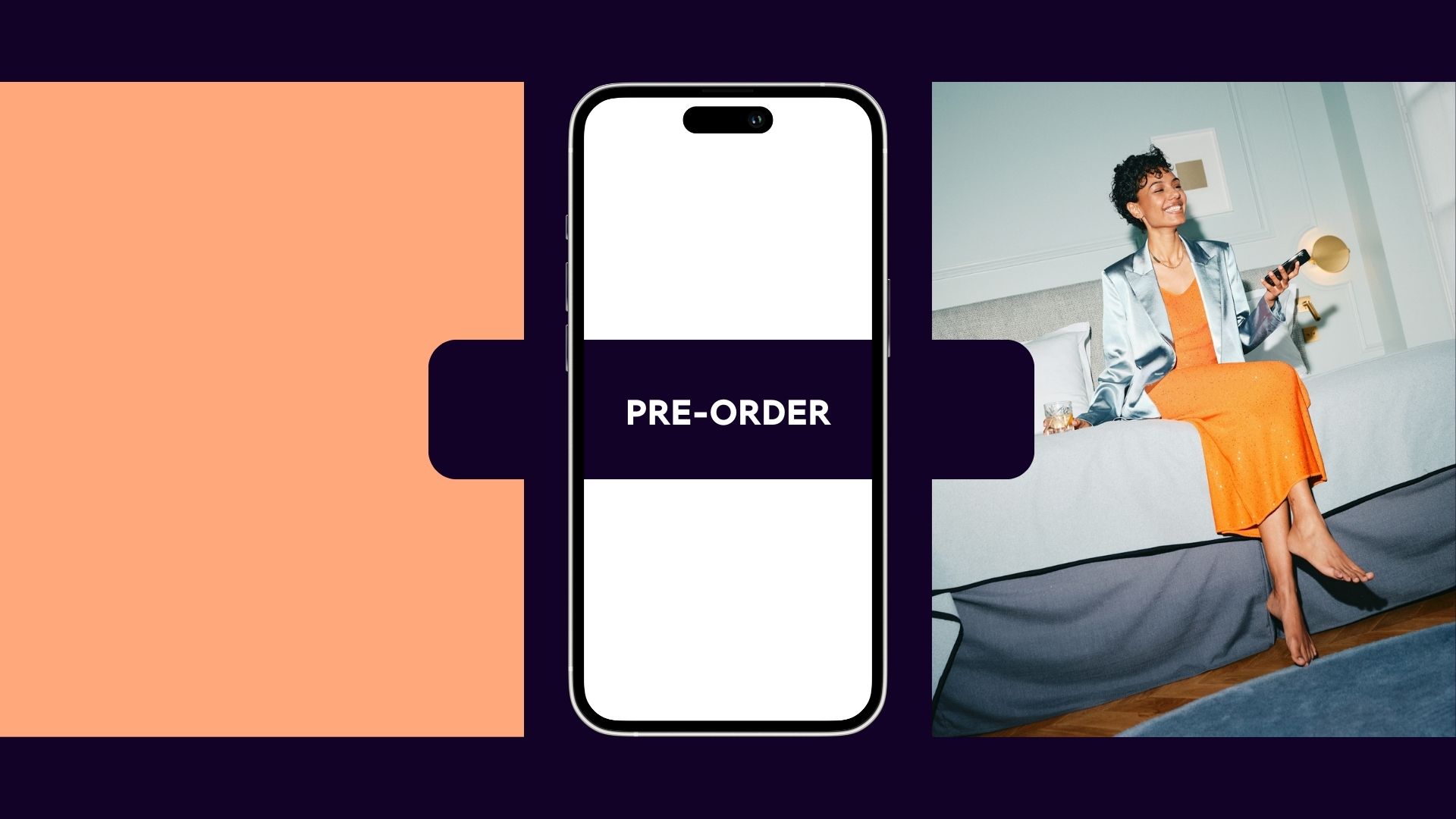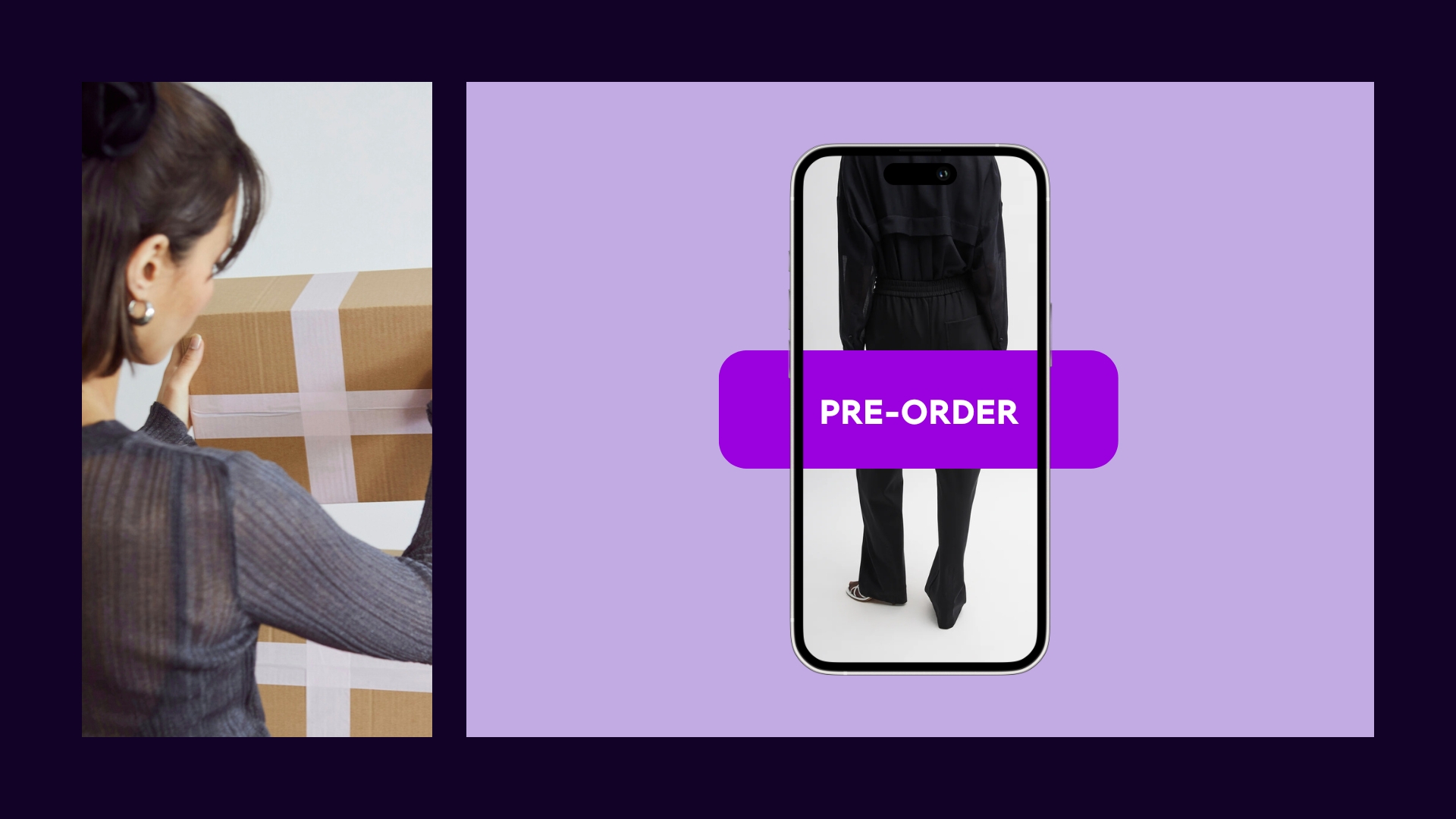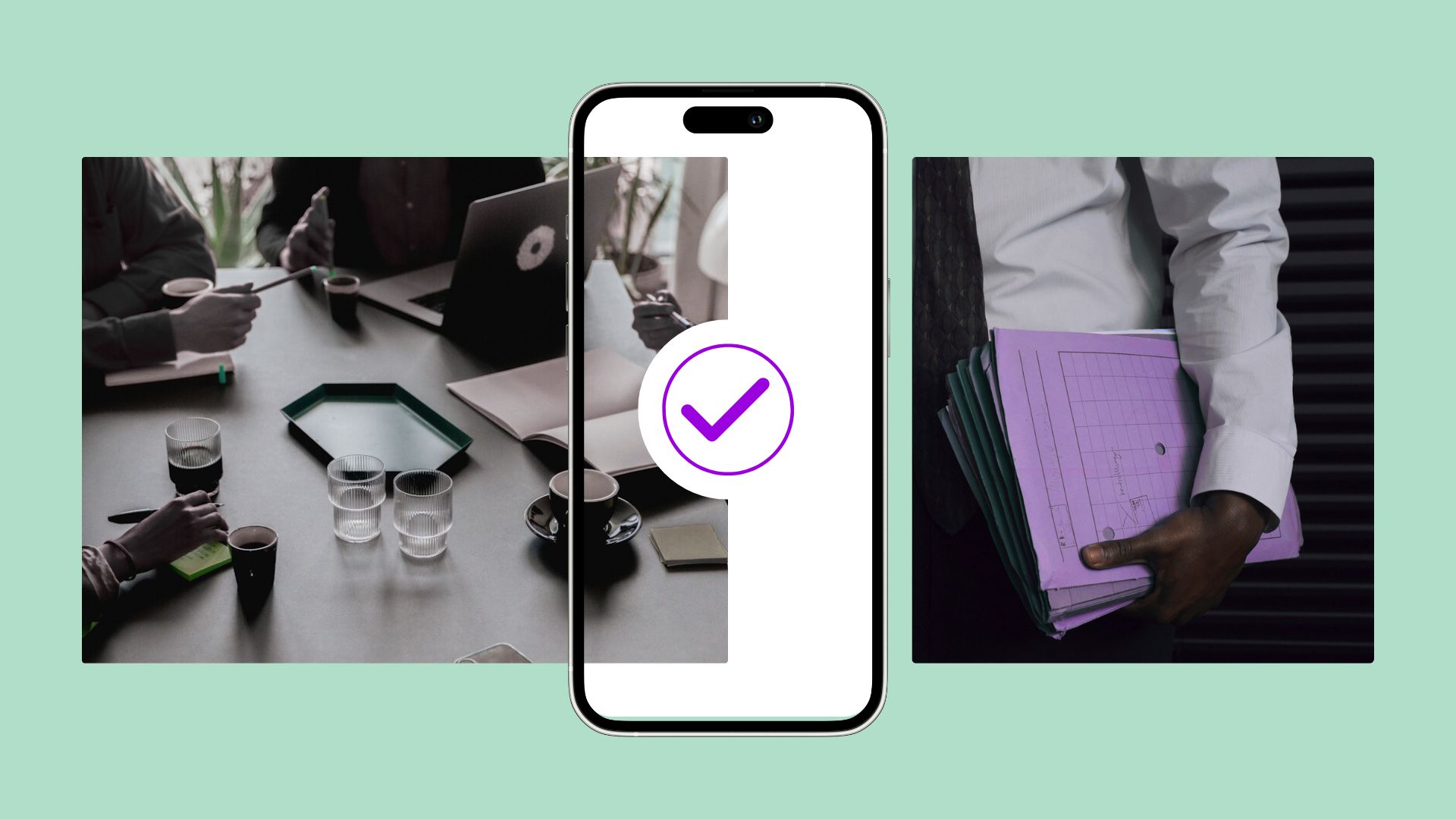What If “Notify Me” Didn’t Mean Pushing Back Sales? A Smarter Approach to Restocks with Pre-Orders

There’s nothing quite like the thrill of seeing your core product line fly off the shelves. A viral launch is exciting—but when your everyday bestsellers keep selling out, that’s when you know you’ve struck gold.
Sellouts should feel like a victory. And, of course, they are! But brands also know that celebration can quickly give way to panic:
How long until our next purchase order arrives?
Should we have ordered more inventory?
How many sales are slipping away because we’re out of stock?
What’s the smartest move now?
The standard play is familiar: switch on a “Notify Me When Back in Stock” button and start capturing the email addresses of interested customers. Plan to send an update later and hope they return to buy.
But what if there were another way to meet customers in their exact moment of excitement? What if, instead of asking them to wait, you let them secure the product right then and there, even before it hits your warehouse?
What if you never truly went “out of stock”?
That’s the power of pre-orders for out-of-stock items. “Sold out” doesn’t have to mean “come back later.” Instead, it can mean “guarantee yours on the next release!”
Of course, if making the switch were that easy, every brand would already be doing it. It’s natural to have questions!
Let’s walk through some of the most common concerns we hear about this shift from “Notify Me” to “Pre-order”. Then we’ll share a simple ChatGPT prompt you can use immediately to pressure-test the idea with your own numbers. From there, it should be easy to decide whether offering pre-orders for out-of-stock items is a strategy that deserves a place in your playbook!
KEY CONSIDERATIONS FOR BRANDS CONSIDERING PRE-ORDERS FOR OUT-OF-STOCK PRODUCTS
You’re not the only brand with questions—we’ve heard them all! Let’s unpack a few of the most common ones together.
“My customers won’t wait that long.”
You’d be surprised! Sometimes this is true, but most times it isn’t.
When it comes to core product lines, if the wait is four months or more, that’s probably too much for most shoppers. But most restock cycles aren’t that extreme—they’re often just a few weeks away to bridge your inventory gap. In that scenario, customers will be excited to pre-order now and be first to have it the moment it arrives at the warehouse!
Want more detail? Take a closer look at how pre-order lead time impacts conversion. You might be surprised to learn that the length of the estimated ship date window actually matters more than the length of the lead time itself!
“Isn’t this just backordering?”
Yes and no. Retailers have used the term “backorder” for decades, but it carries a dusty, transactional feel. “Pre-order” is modern, customer-first, and aspirational. It’s the language today’s shoppers expect—and it reframes waiting as anticipation.
“I see the value in the approach, but our production cycles are just too unpredictable.”
We get it. Many brands hesitate to offer pre-orders because they worry about making promises they can’t keep. But here’s the thing: pre-orders don’t require perfect certainty, they require transparency. Customers are far more forgiving than many brands assume, especially when they’re kept in the loop.
The best approach for unpredictable timelines is simple: give a conservative estimated shipping window (with some padding!) and communicate updates along the way. In practice, delighting customers comes not from waiting until you’re 100% certain of a product’s ship date, but from giving them the option to buy now —and pleasantly surprising them when their order arrives even earlier than they expected.
“What about minimum order quantities for my re-stock?”
Factories often set MOQs that make brands nervous, and we understand why. There’s nothing worse than committing to a big run only to wonder if you’ll actually move it. That’s where pre-orders can give you added assurance.
If your previous purchase order sold through quickly and now customers are actively securing units through pre-orders, that’s real evidence of demand. It gives you a stronger footing to meet the minimum again but even sooner, especially on evergreens—because you’re not just guessing, you’re watching sales build before inventory even arrives.
“But what about customers who don’t want to pre-order? Don’t I need a ‘Notify Me’ option for them?”
The good news is, you don’t have to choose—but the customer can! You can keep Notify Me available for those who’d rather wait, while also giving others the option to lock in their purchase now with pre-order.
That simple choice not only captures more sales (and sooner!) for your brand, it builds trust by showing customers you’re putting the decision in their hands. By offering this choice, you’re letting customers engage in the way that feels right to them, driving loyalty within your core product line.
Want a straightforward way to test out a blended approach? Try it with products already scheduled for restock. Here’s how:
The moment your purchase order is either placed at the factory or loaded onto a ship (depending on your lead times), automatically place a pre-order button with estimated ship dates alongside your “Notify Me” button. That way, you can easily test conversion from pre-orders vs conversion from Notify Me, and see which one drives the most sales (or if both work!). Just remember not only to measure the straight conversion from Notify Me to joining your email list, but extend into conversion to actual purchase once you are back in stock.
We’ve seen pre-orders outperform Notify Me by up to a whopping 89% in head-to-head tests! In just a moment we’ll give you an easy ChatGPT prompt to help you measure this yourself using your current numbers or your test data.
SEE FOR YOURSELF
By now, you’ve seen there are solid answers to the most common concerns about swapping Notify Me for pre-orders. But talk is one thing—evidence is another.
The best way to decide if pre-orders make sense for your brand is to run the numbers yourself. And the good news is, you don’t need a forecasting model or a data team to do it!
Here’s what we know: Pre-order conversion rates for core products are often nearly identical to in-stock conversion rates. Even in more conservative cases, they only dip slightly lower.
That’s why we put together a simple ChatGPT prompt you can use to model the impact with your own data. Just copy and paste, swap in your numbers where it says X, Y, Z, A and B (like a MadLib, remember those?!) and let ChatGPT crunch the math.
Copy/Paste Block for ChatGPT:
“I want you to calculate how much more sales our brand could do per month by offering pre-orders for our restocks instead of a Notify Me email capture.
Our average number of sold out page impressions on my restock products per month is X. Our average number of customers who join a Notify Me list on these products per month is Y. Our conversion rate for the Notify Me email list through to purchase is Z. Our in-stock conversion rate from product description page to purchase is A, and assume a best case that pre-orders convert at the same rate as in-stock and conservative case that pre-orders convert 15% less. Our average product value is B.
What is the best case and conservative case of how pre-orders would perform on total sales vs. Notify Me? Do both monthly and annually.”
With this prompt, you’ll walk into your next team meeting with ballpark estimates you can put side by side:
- What Notify Me is generating now
- What Pre-orders could be generating, both in a best-case and a conservative-case scenario
And you’ll do it all without pulling your data or finance analyst off other projects!
THE BIGGER PICTURE
At the end of the day, restocks are moments of momentum. They’re opportunities to delight customers, generate buzz, and accelerate sales. But the way most brands handle them—by funneling shoppers into a Notify Me list and crossing their fingers—leaves money, loyalty, and energy on the table.
You—and your customers —don’t have to settle for that! By layering pre-orders into your restock strategy, you give your customers what they actually want: the ability to secure the product they’re excited about right now. You also give your teams better data, your finance function stronger cash flow, and your brand more fuel for growth.
And the beauty is, you can test it right away. Run the ChatGPT calculation. See what the numbers look like for your brand. Share the results with your team. From there, the path forward might become obvious.
Because when customers raise their hands to buy, the smartest move you can make is to not stand in their way.
If your numbers look promising, let’s explore how to turn them into real sales—book a call with Purple Dot below!
More insights


